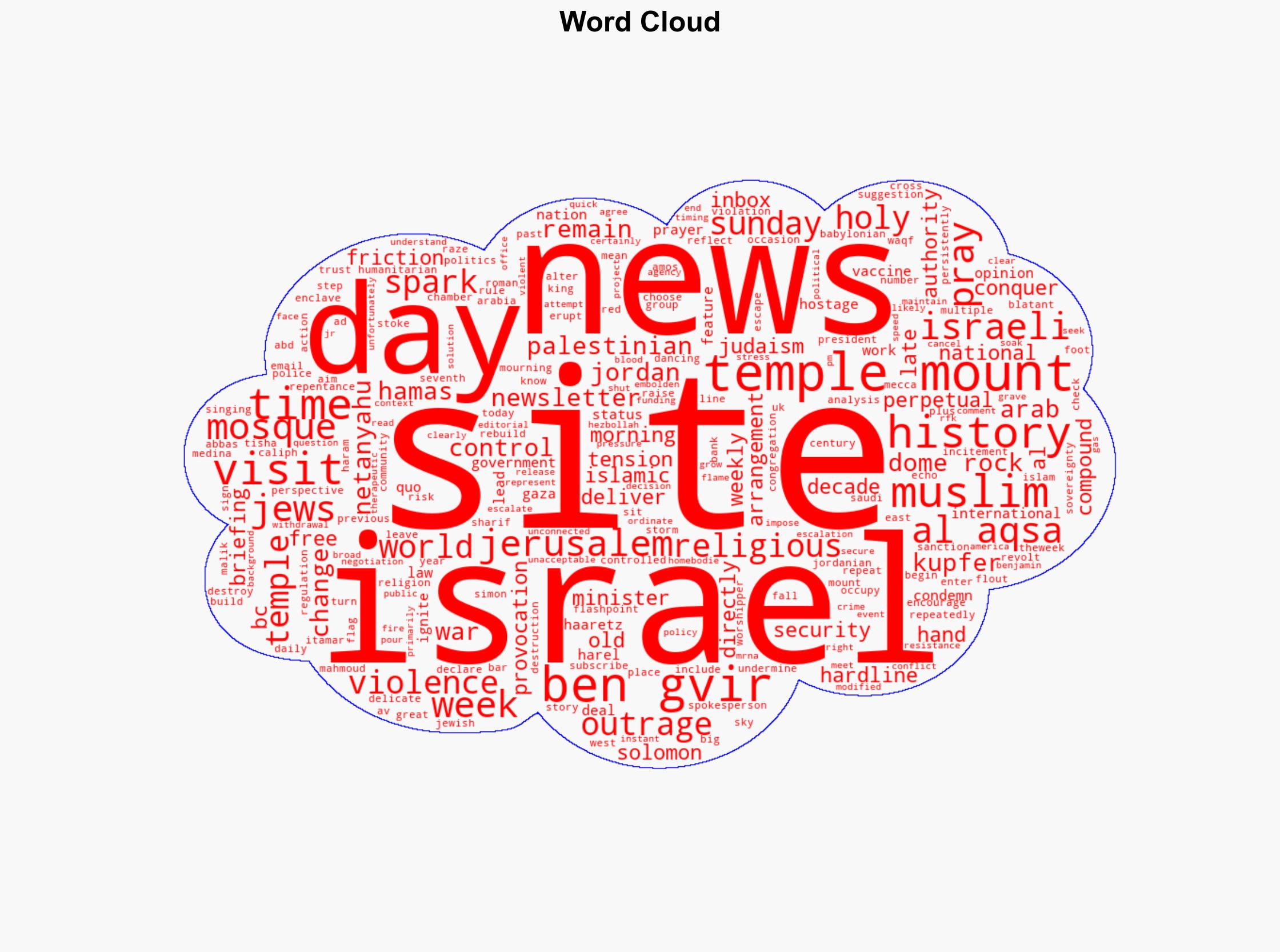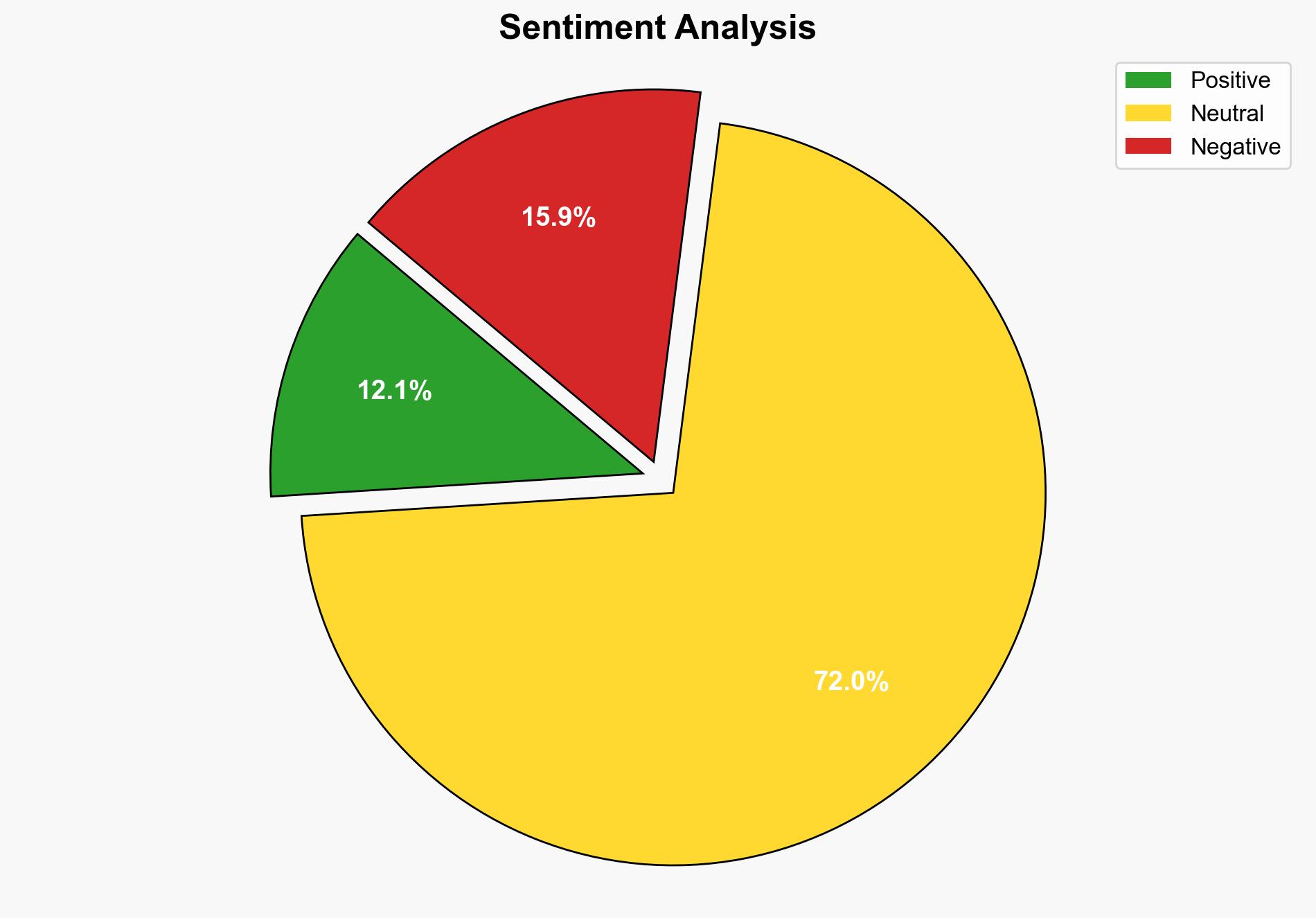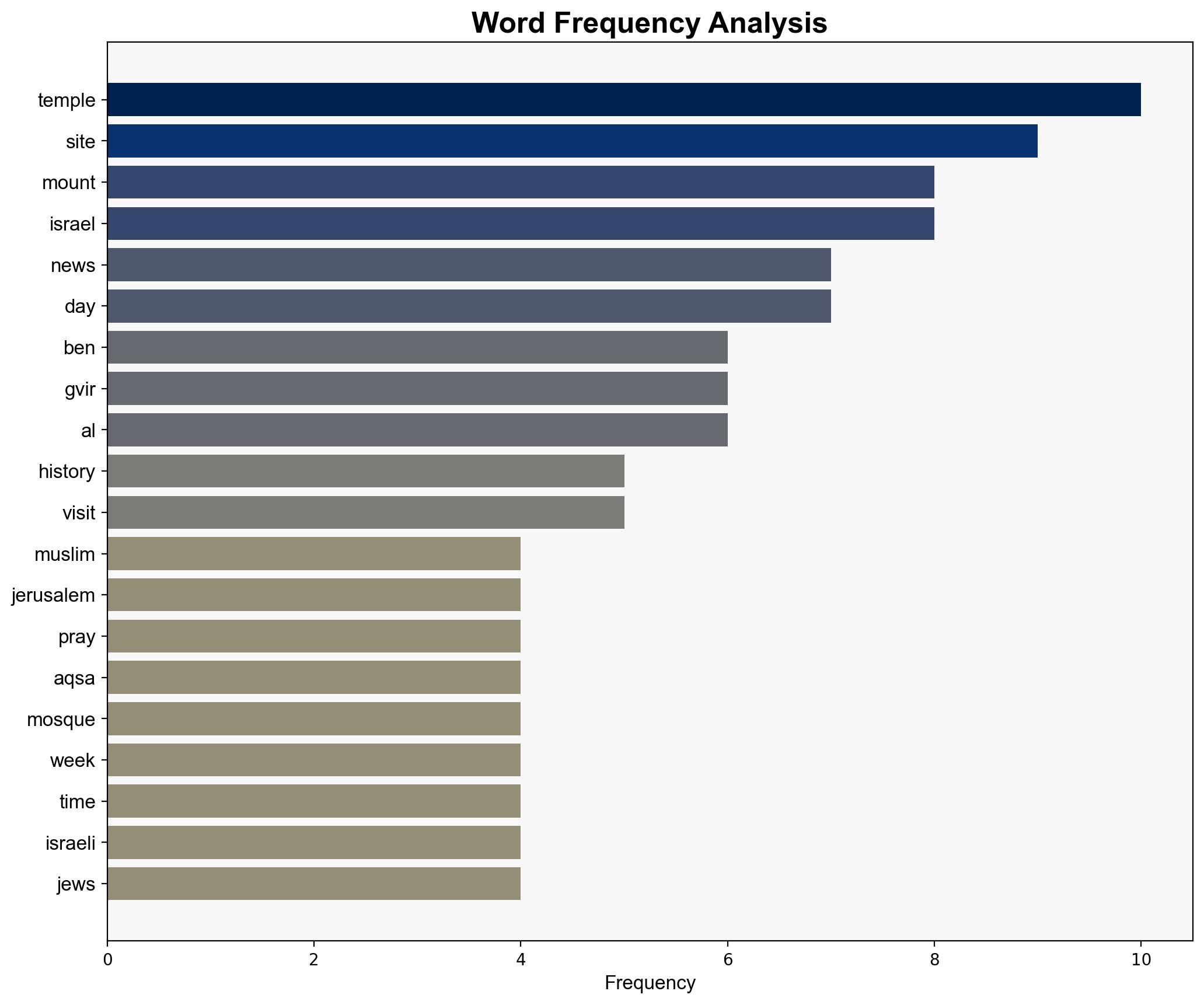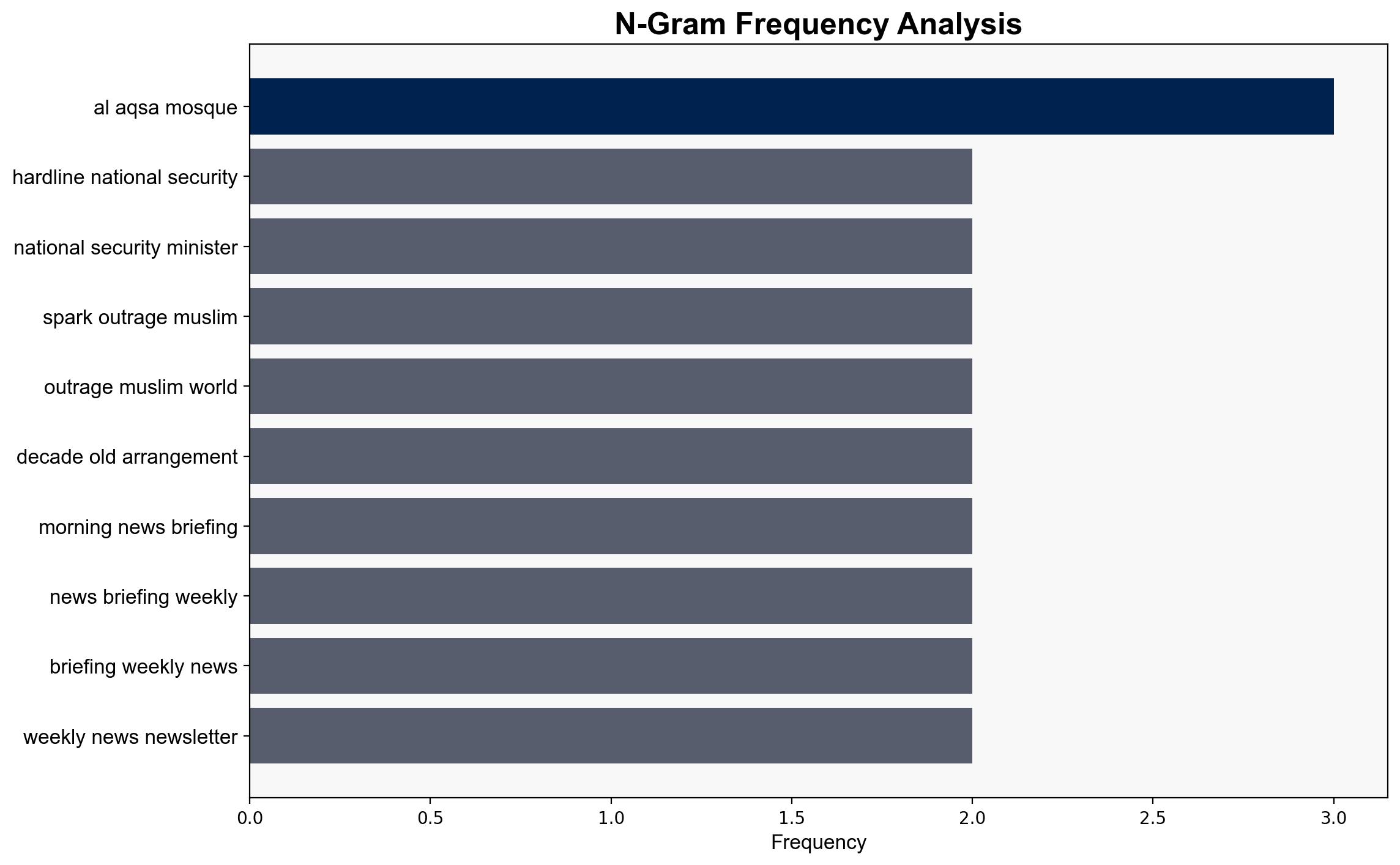Temple Mount the politics of Judaism’s holiest site – The Week Magazine
Published on: 2025-08-05
Intelligence Report: Temple Mount the politics of Judaism’s holiest site – The Week Magazine
1. BLUF (Bottom Line Up Front)
The most supported hypothesis is that the actions of Itamar Ben Gvir are intended to provoke a reaction that could strengthen his political position domestically by appealing to hardline constituents. This hypothesis is supported by the timing and nature of his actions, which align with his political rhetoric. Confidence level: Moderate. It is recommended to closely monitor the situation for potential escalations and to engage in diplomatic dialogues with regional stakeholders to mitigate tensions.
2. Competing Hypotheses
1. **Provocation for Political Gain**: Itamar Ben Gvir’s actions at the Temple Mount are deliberate provocations aimed at consolidating support among hardline constituents in Israel, potentially destabilizing the region to gain political leverage.
2. **Uncoordinated Actions**: Ben Gvir’s actions are independent and not part of a broader strategic plan, reflecting personal beliefs rather than state policy, with unintended consequences on regional stability.
3. Key Assumptions and Red Flags
– **Assumptions**: The analysis assumes that Ben Gvir’s actions are politically motivated and that he has significant influence over public sentiment and policy. It also assumes that the Israeli government’s official stance is to maintain the status quo.
– **Red Flags**: The lack of clear communication from the Israeli government regarding the coordination of Ben Gvir’s actions could indicate internal political discord. The timing of the visit on a significant religious day raises questions about intent.
– **Blind Spots**: Potential underestimation of the Palestinian Authority’s and regional actors’ responses, as well as the internal political dynamics within Israel.
4. Implications and Strategic Risks
– **Regional Tensions**: Increased risk of violence in Jerusalem and broader Israeli-Palestinian areas, potentially drawing in neighboring countries like Jordan and Saudi Arabia.
– **Political Instability**: Potential for internal political instability within Israel if public sentiment shifts against the government’s handling of the situation.
– **International Relations**: Strained relations with key allies and regional partners, impacting diplomatic and economic engagements.
5. Recommendations and Outlook
- **Mitigation**: Initiate diplomatic engagements with Jordan and other regional stakeholders to reaffirm commitments to the status quo and reduce tensions.
- **Monitoring**: Establish a monitoring mechanism for actions at the Temple Mount to provide early warnings of potential escalations.
- **Scenario Projections**:
- **Best Case**: Diplomatic interventions succeed, tensions de-escalate, and the status quo is maintained.
- **Worst Case**: Escalations lead to widespread violence, drawing in regional actors and destabilizing the region.
- **Most Likely**: Continued low-level tensions with periodic escalations, requiring ongoing diplomatic and security management.
6. Key Individuals and Entities
– Itamar Ben Gvir
– Mahmoud Abbas
– Benjamin Netanyahu
– Amos Harel
7. Thematic Tags
national security threats, regional focus, geopolitical tensions, religious conflict




